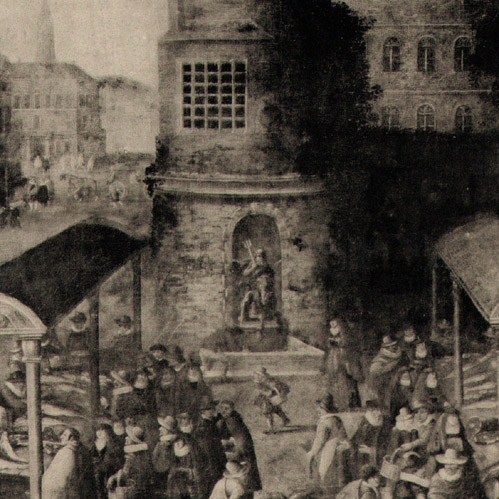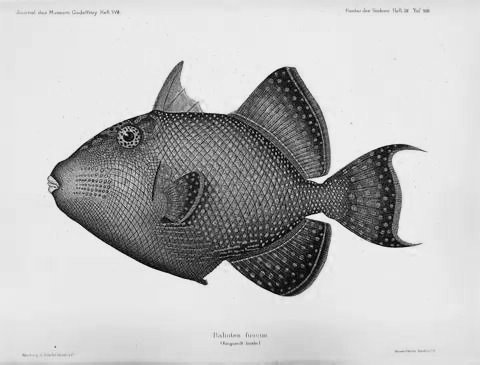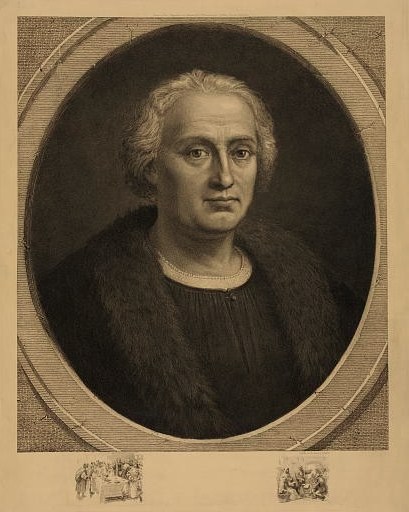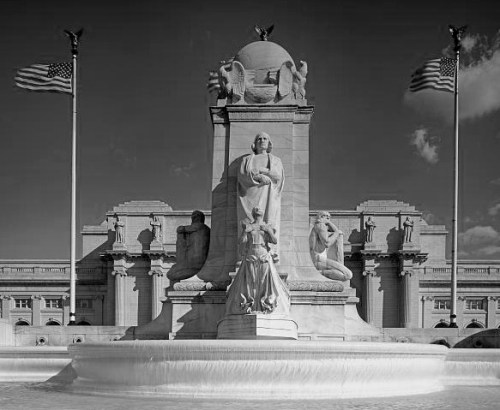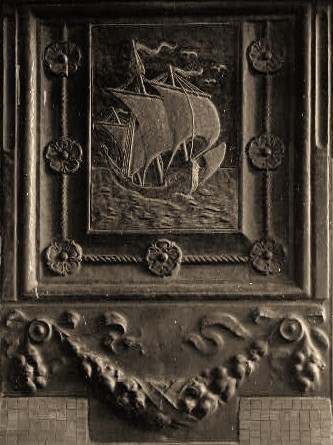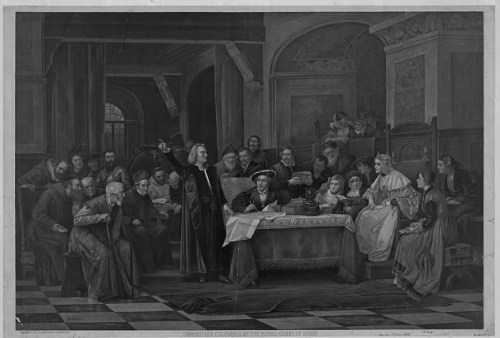Recently we listed a book that maintained that the purpose of Columbus’ voyage was in search of new fishing grounds to satisfy the needs of the practises of fasting and abstinence that were part of Europe’s culture at the time. Now comes a book that maintains that his goal was to help finance a new crusade to reclaim the Holy Land. Both books offer convincing arguments based on sound research and there is nothing in either book that precludes the thesis of the other. What we are left with is two studies of different facets of a historical era both of which confirm the dominance of a Christian Europe that had not yet – in spite of numerous and serious reversals – surrendered its responsibilities to and for the Faith.
Two of the practises that may have had the most influence on Columbus – that are almost entirely missing from the modern tradition – are first, the pilgrimage and second, the crusade. The following is one of the canons enacted under King Edgar (959-75) It is a deep penitence that a layman lay aside his weapons and travel far barefoot and nowhere pass a second night and fast and watch much and pray fervently, by day and by night and willingly undergo fatigue and be so squalid that iron come not on hair or on nail. The pilgrimage to Santiago Matamoras [literaly, St. James kill the moors!] became the greatest Spanish pilgrimage of the age.
The second great force – crusade – announced as Deus le Volt! [God wills it!] was on the decline in Columbus’ Europe since they were on the defensive against muslim invasions and would be for most of the next two hundred years. However if the practical reality was a non-starter the idea of redeeming the Holy Lands was still a desired reality. Since the Middle Ages the meaning of crusade has been extended to include all wars undertaken in pursuance of a vow, and directed against infidels, i.e. against mohammedans, pagans, heretics, or those under the ban of excommunication.
The idea of the crusade corresponds to a political conception which was realized in Christendom that supposes a union of all peoples and sovereigns under the direction of the Church. All crusades were announced by preaching. After pronouncing a solemn vow, each warrior received a cross from the hands of the pope or his legates, and was thenceforth considered a soldier of the Church. Crusaders were also granted indulgences and temporal privileges such as exemption from civil jurisdiction, inviolability of persons and lands so that the interests of the Church and the interests of the crusader became difficult to distinguish.
The dominant understanding of Christopher Columbus holds him responsible for almost everything that went wrong in the New World. This new book radically challenges that interpretation of the man and his mission. Delaney argues that he was inspired to find a western route to the Orient not only to obtain vast sums of gold for the Spanish Crown but primarily to help fund a new crusade to take Jerusalem from the Muslims — a goal that sustained him until the day he died. Delaney reveals Columbus as a man of deep passion, patience, and religious conviction.
Delaney sets the stage by describing the tumultuous events that had beset Europe in the years leading up to Columbus’s birth — the failure of multiple crusades to keep Jerusalem in Christian hands; the devastation of the Black Plague; and, just two years after his birth, the sacking of Constantinople by the Ottomans barred Christians from the trade route to the East AND the pilgrimage route to Jerusalem. Columbus’s belief that he was destined to play a decisive role in the retaking of Jerusalem was the force that drove him to petition the Spanish monarchy to fund his journey, even in the face of ridicule about his idea of sailing west to reach the East.
Columbus and the Quest for Jerusalem is based on extensive archival research, trips to Spain and Italy to visit important sites in Columbus’s life story, and a close reading of writings from his day. It recounts the drama of the four voyages, bringing the trials of ocean navigation vividly to life and showing Columbus for the master navigator that he was.
Delaney offers not an apologist’s take, but a clear-eyed, thought-provoking, and timely reappraisal of the man and his legacy. She depicts him as a thoughtful interpreter of the native cultures that he and his men encountered, and unfolds the tragic story of how his initial attempts to establish good relations with the natives turned badly sour, culminating in his being brought back to Spain as a prisoner in chains.
Putting Columbus back into the context of his times, rather than viewing him through the prism of present-day perspectives on colonial conquests, Delaney shows him to have been neither a greedy imperialist nor a quixotic adventurer, as he has lately been depicted, but a man driven by an abiding religious passion.












